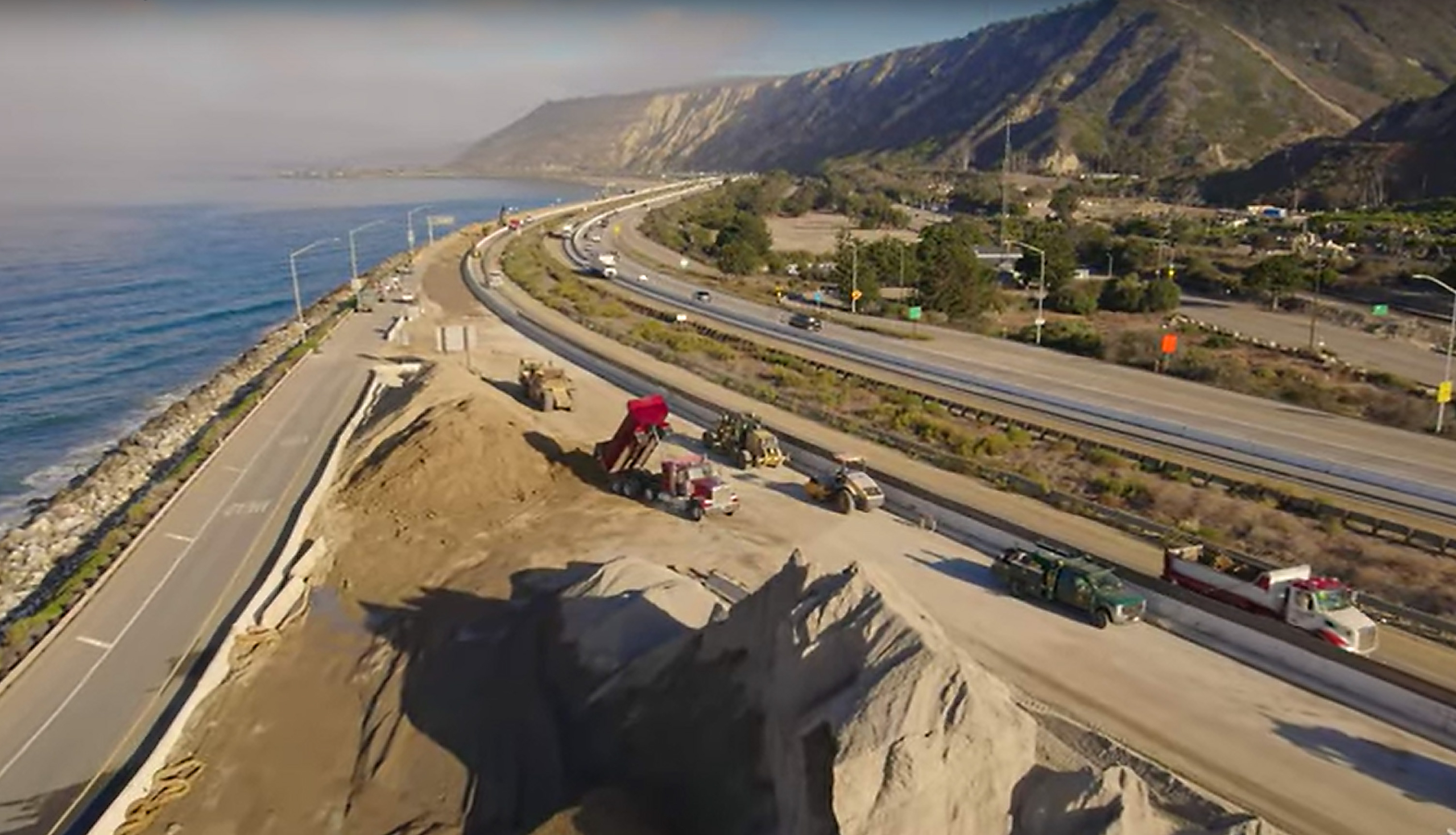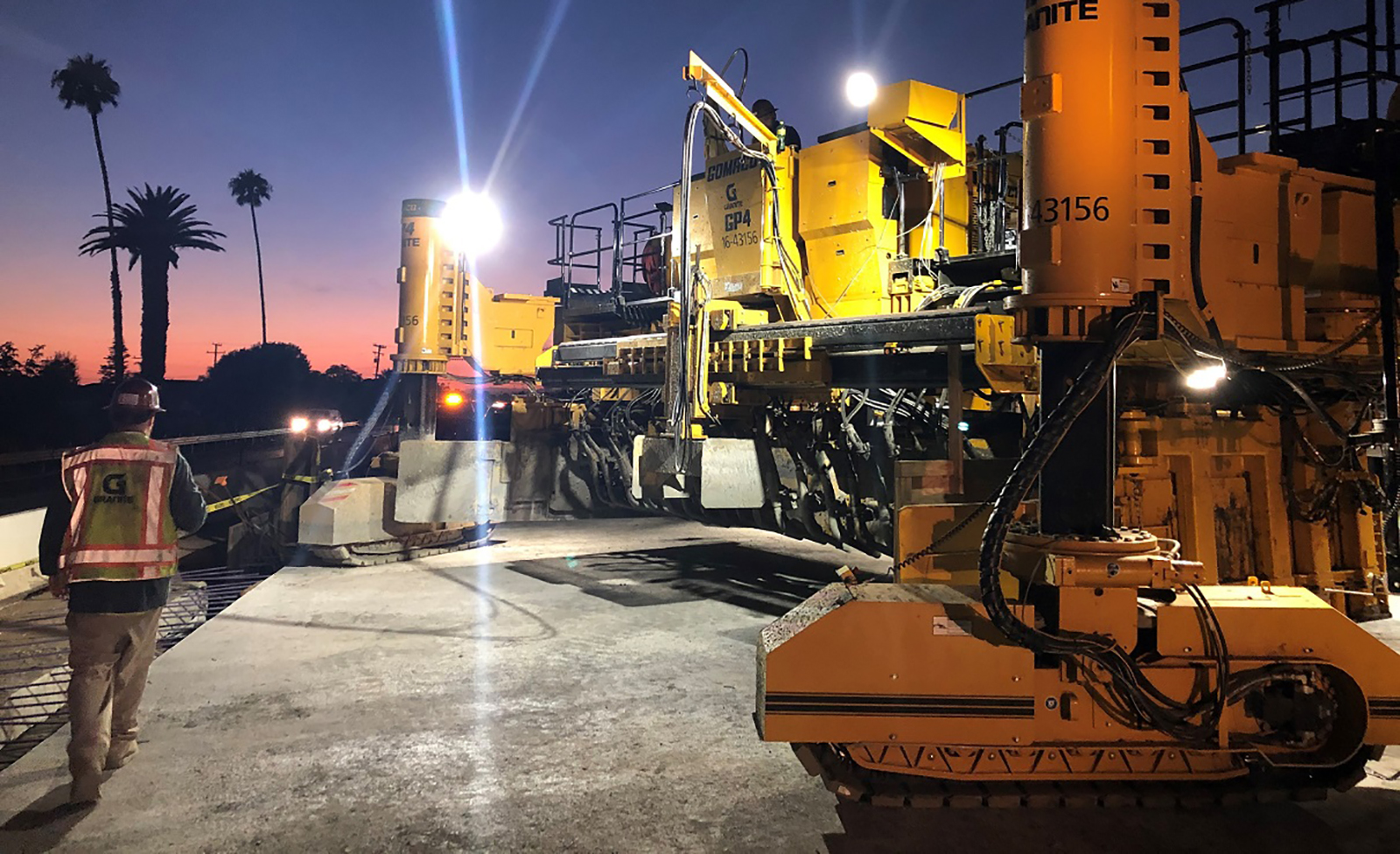Adopting PLC in the New Highway 101 Mix is One Giant Step
Granite Construction has a long-held commitment to Sustainability. The company’s strategic objectives include Social Responsibility, Environmental Stewardship, Dependable Governance, and Enduring Value. They define sustainable infrastructure solutions as those that positively impact the environmental, social, and economic sustainability of the communities they serve.
So, it only makes sense that Granite is at the forefront of incorporating materials that affect a lower carbon footprint in their concrete pavement projects. On the Highway 101: Santa Barbara to Mussel Shoals Project, Granite chose not to use Type II cement, but instead is working with National Cement to incorporate Type 1L, Portland limestone cement (PLC), into the mixes for the Highway 101 project.
SWCPA Communications Director Mark Gudenas recently spoke with Jon Hamilton, Granite’s Construction Manager – Concrete Paving in the South Coast Region of California, about this change, along with other sustainability measures that Granite is putting into place.
Gudenas: Jon, what precipitated Granite’s change from Type II cement to Type 1L or PCL on the Highway 101 project?
Hamilton: Granite has always been a leader when it comes to finding ways to build more sustainably. In fact, Sustainability is one of Granite’s core values. We’re dedicated to finding new technologies and new materials to advance that principle. One measure that’s currently underway is the transition to electric vehicles. We’re seeing if the Ford Lightning, the electric version of the F-150, will be the new pick-up truck of our fleet.
Back to the change from Type II to Portland limestone cement; for the concrete mixtures on the Highway 101 Project, it just makes sense to move to PLC. It’s the next logical step in advancing our sustainable practices, reducing the carbon footprint of the project, and it helps set the stage for other concrete pavement projects moving forward. The numbers are there; using PLC reduces the carbon footprint by 10%.
Gudenas: Is Granite incorporating Environmental Product Declarations (EPDs) anywhere?
Hamilton: We have Environmental Product Declarations in place at our aggregate facilities. We’ll see where else we can accurately apply the new “nutritional label.” It’s a good step.
Gudenas: Have you found that PLC is more expensive that traditional cement?
Hamilton: No, it’s actually competitive. I think that as more and more cement manufacturers transition to PLC in their plants, PLC will actually become less expensive than Type II cement.
We appreciate National Cement gearing up production of PLC at their state-of-the-art plant in Lebec, which made delivery to the 101 project easy. It’s great to support and work with National and other companies that recognize the importance of environmental stewardship and who are doing their part to get to the goal of being carbon neutral.
Gudenas: Why did you chose the Highway 101 Project to initiate the change to using PLC?
Hamilton: In that area, specifically, many local residents have asked that freeway improvements be constructed out of concrete due to the longer lifespan and reduced maintenance. To achieve that, we’re placing CRCP (Continuously Reinforced Concrete Pavement) with PLC in the mix. CRCP creates a smoother and quieter roadway surface compared to other pavements. It is also stronger and lasts longer. It reduces the number of maintenance projects generated by potholes, cracks, and surface deterioration that occur more rapidly in other pavements.
On top of that, literally, we’re applying NGCS (Next Generation Concrete Surface) to the surface of the pavement using diamond grinding equipment to make it as smooth and quiet as possible.

Granite’s on-site batch plant on Highway 101 is a logical and remarkable way to save fuel, time, congestion, and water.
And in the design of the new roadway, Geogrid and fabric were included to reduce the depth of the structure section, which in turn, reduced the depth of excavation and export of soil by more than 100,000 cubic yards.
Gudenas: Knowing that stretch of 101, traffic can get heavy. Did you do anything to minimize the impact of your equipment on the road?
Hamilton: Definitely. We’re mixing the concrete on-site at the North Padaro Interchange. We’re using an onsite plant that reduces the miles that trucks need to travel carrying the mixed concrete by about six to 16 miles per trip, between Carpinteria and Summerland. We did the math on this and it multiplies out to an average of more than 463,000 miles saved with another 138,000 miles that’ll be saved for the Montecito and Santa Barbara segments. That scores another sustainability trifecta – reduced fuel use, improved air quality, and reduced impacts to the neighborhoods both inside and outside of the improvement area.
On top of that, the on-site batch plants are saving 400,000 gallons of water. Plus, the old concrete pavement that we’re removing from the roadway is being recycled and then reused as roadway base. More than 250,000 tons of concrete will be recycled over the course of this project.
Adding all of these sustainable measures up, Granite will be saving taxpayers more than $10 million and, in the process, reduce any negative environmental impacts.
Gudenas: Thanks, Jon, for pioneering the use of PLC on this project.
Hamilton: We’re enthused to be working with Caltrans on this project. This is just the beginning of what we are doing, and what the entire concrete paving industry is doing, to reduce the CO2 in the manufacture of cement – and subsequently in the concrete that goes into our long-life pavements.



